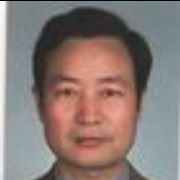- 脑肿瘤的鉴别——良性颅内高压
- 阿司匹林在动脉硬化性心血管疾病...
- 合唱能帮助现代人舒缓心理压力
- 丙戊酸的新作用??对脑损伤的保...
- 脑肿瘤的鉴别??良性颅内高压
- 低度恶性星形细胞瘤和少质胶质细...
- 柳叶刀:研究证实阿司匹林具抗癌...
- 脑出血的预后
- 既往有过脑梗塞病史的脑出血病人...
- 恶性胶质瘤治疗指南(2012)
- 控制情绪,提高修养。心理健康了...
- 脑瘤的预后
- 脑瘤的治疗
- 脑肿瘤的鉴别??良性颅内高压
- 眩晕
- 比化疗更重要的放射治疗
- 高压氧和恶性肿瘤
- 高压氧治疗的禁忌症
- 脑胶质瘤治疗指南
- 理解放疗,了解化疗
- 来自英国血液病委员会的成人原发...
- 写在岁末,给胶质瘤患者和家属
- 医学的哲学理念和人文修养
- 伽码刀和胶质瘤和脑转移癌
- 强化人体本能是二十一世纪人类健...
- 数字与人体
- 人体有趣的一组数字
- 伽码刀治疗胶质母细胞瘤疗效显著
- 月经不规律要想到不要光想到高泌...
- 高压氧治疗胶质瘤的另一个证据
- 他山之石可以攻玉
- 绝对经典的颅内肿瘤知识(默克手...
- 胶质母细胞瘤治疗指南
- 低度恶性胶质瘤治疗指南
- 胶质瘤不化疗也罢
- 成人毛细胞性星形细胞瘤??想说...
- 颅脑损伤和颅内压管理
- 丙戊酸钠和胶质瘤
- 低氧条件下胶质瘤细胞生长更加旺...
- 胶质瘤起源于脑内不成熟的支持细...
- 脑转移癌??成人最常见的脑肿瘤
- 脑溢血的高危因素??糖尿病,高...
- 保肝药物利加隆抑制脑胶质瘤细胞...
- 中央神经细胞瘤
- 21世纪高泌乳素血症
- 21世纪胶质瘤治疗指南
- 胶质瘤的自然史
- 植物营养素抗击脑肿瘤
- 恶性胶质瘤:无论金钱还是权势都保护不了你
- 作者:魏社鹏|发布时间:2009-08-13|浏览量:1802次
Malignant glioma: Neither money nor power can protect you
恶性胶质瘤:无论金钱还是权势都保护不了你。
by Dr. Delia Chiaramonte, Baltimore Health Examiner
生了脑瘤是个坏消息。尽管部分脑瘤生长缓慢并且不会转移,但是大部分恶性胶质瘤却具有残酷的攻击性。有这样几种胶质瘤:星形细胞瘤,胶质母细胞瘤等,它们的鉴别需要在显微镜下进行。年龄,肿瘤类型和一般健康状况都能影响胶质瘤的预后。上海东方医院神经外科魏社鹏
脑瘤能在没有症状的情况下生长一段时间。许多肿瘤,只有在病人出现头痛,癫痫发作或者性格改变的情况下才会被发现。
胶质瘤的初始治疗手段是手术。但是这并不如听起来那么简单。有证据表明,手术切的越彻底,则病人的生存期就会越长,但是我们必须注意到,我们谈论的是脑组织。手术医生越激进,则脑组织受伤的风险就越大。恶性胶质瘤的手术切除经常是在寻找全切和功能保留之间的一个微妙的平衡。有时候,医生可以让病人在清醒的状态下手术,为的是评价重要功能区的瘤组织拿掉后,是否对病人的功能(例如言语)产生影响。不幸的是,恶性胶质瘤边界不清,因而不能被全切。尽管手术似乎很成功,但是它们终究会复发。
术后放疗已经被发现可以延长生存期。复发倾向于在原来肿瘤部位周围2cm以内。因而,没有必要对病人进行全脑放疗。CT检查已经能帮助放射肿瘤专家完成对病变的定位,从而避开对正常脑组织的伤害。
尽管给了手术和放疗,恶性胶质瘤还是会复发的。尽管目前还没有一种魔术弹能够攻克胶质瘤,但是化疗的给予被发现可以提高生存期。除了标准的化疗方案意外,有的医生偏向于使用卡氮芥糯米纸胶囊剂。
这种制剂是将化疗药物埋植在可以吸收的基质中,后者被贴附在肿瘤残腔表面。这种办法使得化疗药物能就近连续释放。这种胶囊制剂的确可以延长病人的生存期,但同时也会伴发严重的副作用,如脑肿胀等。
尽管在对付胶质瘤方面,我们付出了巨大的努力,但是大部分病人还是会复发。对恶性胶质瘤的理想治疗仍然只是个神话。研究仍然在继续,去探索能将胶质瘤控制住的魔术弹。
参议员肯尼迪,像其他恶性胶质瘤患者一样,正处在顽强的抗争中。也有存活过很多年的胶质瘤患者,肯尼迪可能就是他们中的一员。
点亮蜡烛,祈祷一下,传递一些有治疗功用的能量,没有坏处。
送给那些与胶质瘤战斗的人们??我们支持你。
Brain tumors are bad news. While there are some brain tumors that grow slowly and
don’t spread, most malignant gliomas are relentlessly aggressive. There are several types
of gliomas, including astrocytomas and glioblastomas, which are differentiated by their
appearance under the microscope. Factors such as age, tumor type, and general health
status can affect the overall prognosis.
Brain tumors can grow undetected for some time. Many patients have no idea that their
brain is under attack until they develop symptoms such as headaches, seizures, or
personality changes.
The initial treatment for gliomas is surgical removal, but this isn’t as simple as it might
sound. There is some evidence that more extensive surgery may be associated with
longer survival, but of course this is the brain we’re talking about. The more aggressive
the surgeon is, the greater the risk for brain injury. The removal of a malignant brain
tumor is a frighteningly delicate balance between thoroughness and preservation of
function. Sometimes surgeons actually operate while the patient is awake, so that they
can assess important neurological functions such as speech before removing a hunk of
brain. Unfortunately, malignant gliomas tend to have poorly defined tumor margins and
are therefore hard to remove completely. Even when surgery appears to be successful,
these tumors often recur.
Radiating the region of the removed tumor has been shown to increase survival.
Recurrences tend to be within 2 cm of the original tumor site, so there is no need to risk
the side effects of irradiating the whole brain. Imaging studies such as CT can help the
radiation oncologist to focus the radiation on the tumor while avoiding most of the
normal brain.
Even with surgery and radiation, malignant gliomas often return. Although there is no
magic bullet, the addition of chemotherapy has been shown to improve survival. In
addition to standard chemotherapy options, some physicians favor the use of the gliadel wafer.
This involves a chemotherapy drug embedded in a biodegradable matrix that is
implanted directly into the brain. It allows the drug to be released near to the tumor,
continuously over time. The gliadel wafer has shown some improvement in survival, but
it can be associated with severe side effects such as brain swelling.
Despite these Herculean efforts to beat back this cancer, most patients will relapse.
The ideal therapy for malignant gliomas is still a mystery, and researchers continue to
search for the magic bullet that has eluded them thus far.
Senator Kennedy, like so many others with malignant brain tumors, is in a tough spot.
There are people who survive gliomas for many years ? maybe he will be one of them.
Light a candle. Say a prayer. Send some healing energy. It can’t hurt.
To all those out there who are battling brain cancer ? we’re pulling for you.
TA的其他文章:



